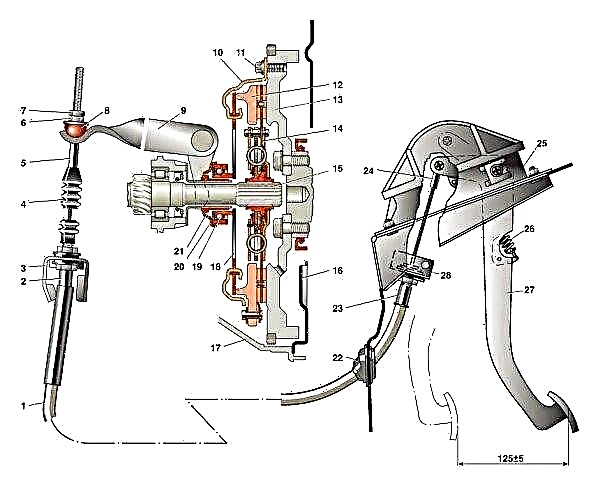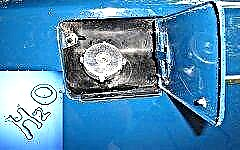
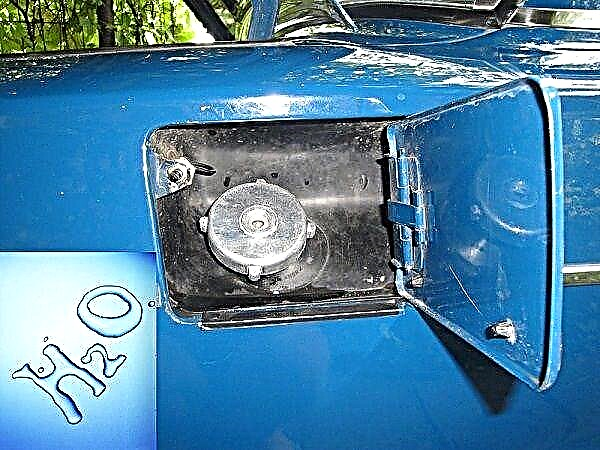
The content of the article:
- Symptoms of water in a gas tank
- Moisture paths into the tank
- Danger of water
- Liquid removal
- Prophylaxis
The car owner can carefully monitor the quality of the fuel being refueled, be it gasoline or diesel, but one day he will still face the unstable operation of his four-wheeled assistant.
The presence of water in the gas tank is a common problem for motorists. However, it can only be assumed by very experienced drivers who are well versed in the operation of their vehicle.
But if a few years ago the water that got into the tank caused only an unpleasant loss of power, then as the car's manufacturability continues to increase, its presence can cause extensive and very expensive repairs.
Symptoms of water in a gas tank
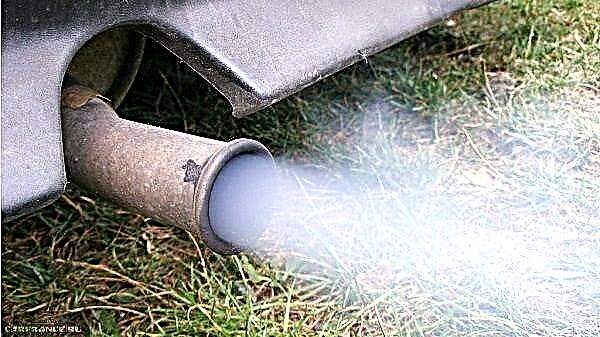
It is not necessary to have technical knowledge, carry out any manipulations with a gas tank or contact a car service to identify a problem. When the car owner already feels his car and is used to its characteristics and behavior, he will immediately notice the oddities in its work. The combination of the following indicators should lead the car owner to the idea that unnecessary moisture could seep into his gas tank:
Poor engine starting
Most often, water enters a vehicle that has been stationary for a long time. The motor will be very difficult to start and stall incessantly. But even in the event that literally yesterday everything was in order, there are no complaints about the battery, and the next morning the car will not start, this should arouse suspicion. This means that gasoline with a lower density has gone up, and the fuel system draws in water that has settled to the bottom, on which the machine refuses to work.
Knocking, vibration and engine malfunction
There may be a situation when the spark plugs are in good condition, just like the cylinders, but the engine seems to be troit. And when you start a cold engine, there is a strong vibration, which is reduced in the process of warming up the car. All this indicates accumulated moisture, which gradually evaporates from heating.
Paths of water entering the gas tank
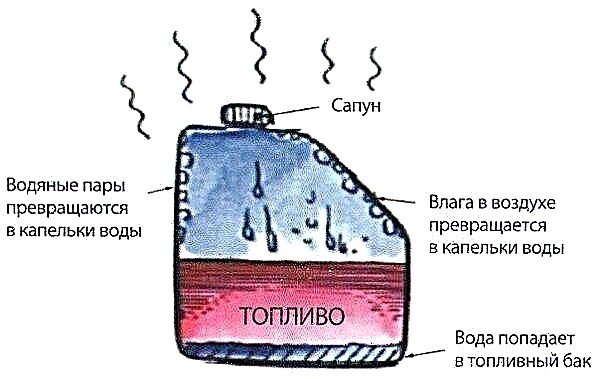
The most common reason related to the category of subjective - through a gas station... At little-known gas stations with unclean employees, water-diluted fuel can be poured into the gas tank. Fraudsters thus increase sales, and the driver gets serious engine problems at his own expense.
The next reason is itself gas tank design... Since it is not completely airtight, air seeps into it. As you know, the air contains a certain amount of moisture that settles on the walls of an incomplete gas tank, from where it slowly flows into the fuel. Moisture will also penetrate in rainy or foggy weather, which is immediately determined by the accumulation of drops on the lid.
Under normal conditions of storage and operation of the car, condensate will accumulate to a critical mass, which will stop the operation of the car for a long time. The situation is worse for motorists who live in humid regions or have to regularly leave their car in damp rooms. In such situations, it is recommended to always keep the tank full so that there is no place for air to enter and settle as condensation.
Finally, the last reason may be deliberate hooliganism... Teenagers or people who want trouble for the car owner can deliberately pour some water into the tank. To protect yourself from such an accident, you should install the gas tank cap with a special lock.
What threatens water in a gas tank
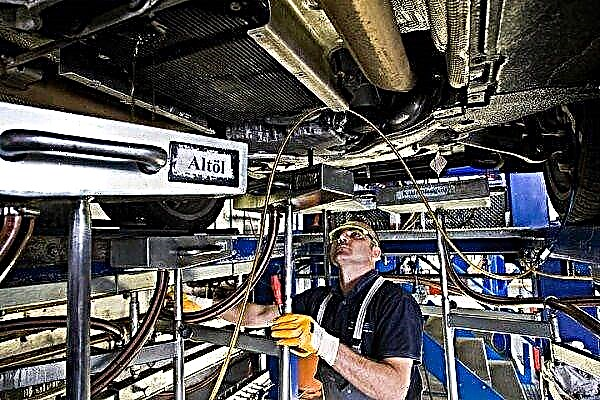
Water poses the greatest danger to injection and diesel engines than to gasoline or carburetor ones. The latter redirect excess moisture to the bottom of the carburetor, from where the owner can easily drain it.
Moisture is very harmful in cold weather. The car will not start, the gas pump and injector nozzles may suffer from the expanded water, the frozen injection system will fail. Before removing water from the gas tank in winter, the car must be driven away to a warm place, otherwise the ice barrier simply cannot be defrosted.
Even if the car starts, the engine on the water will run unevenly, twitch while driving, and have difficulty climbing hills and uneven surfaces.
The motorist can make a mistake and additionally refuel the car to correct the situation. It will only worsen the situation, as it will plant the battery and disrupt the operation of the gas pump. This is a very common mistake of those drivers who, due to the nature of the unstable engine operation, cannot correctly identify the problem and try to solve it in the heat of the moment, without understanding the root of the trouble.
Well, there is no escape from rust, which certainly begins to appear on all metal surfaces where moisture has been for a long time.
Water removal

Not all car owners know how to remove water from a gas tank without removing it. Meanwhile, this is an elementary procedure, carried out with improvised means. Here are the important points of this process:
Empty the tank naturally, having used up all the fuel, will not succeed without the risk of damaging the vehicle. In injection machines, it is easiest to remove water from the gas tank with a pump, the so-called communicating vessel method.
The fuel pump must be reached by removing the seats and removing the fuel supply hose. After that, another hose is put on the spool, which is placed in an empty bucket or other container. When the ignition is turned on, an electric fuel pump is activated, quickly ridding the tank of all that is superfluous.
It is more convenient to carry out such an event using a viewing hole or any elevated point, for example, an overpass.
Apply to gasoline engines folk, proven method for decades... To remove water from the gas tank, dilute it with alcohol. The technology works when the gas tank is as full as possible, into which no less than a standard glass of medical alcohol or any other with flammable properties is poured.
By reacting with each other, the fluids are burned without damage to the engine and the entire fuel system. High-quality alcohol will not leave behind any deposits on the bottom and walls of the gas tank.
You can determine the purity of alcohol by igniting a small amount of liquid - an invisible flame will indicate the absence of impurities. You just need to be prepared for the sediment raised from the bottom of the tank to clog the fuel filter, which will have to be changed immediately.
If, even before the onset of the cold season, you take care and add a little alcohol to the fuel, this will protect in the future from ice formation and potential damage to the gas pump.
But before removing water from the gas tank of a diesel car, you need to add about half a liter of engine oil... The effect is similar to the previous one - the emulsion will burn out.
Some fight water with automotive chemicals, which have properties to absorb, bind together water molecules. But this is a rather dubious practice, since the effect of these reagents on the insides of the engine is not fully known.
Lucky for those owners who have a drain plug on the gas tank of their car. Then neither alcohols, nor auto chemicals, nor pumps will be required - just completely empty the tank, wait for it to dry completely and fill it to the very neck so as not to let the condensate pass.
Those motorists who are well tech-savvy and understand the structure of their car can remove the gas tank... For this method, improvised devices are not needed, and as a result, there will be an almost 100% guarantee of a cleaned tank.
A knowledgeable person will simply remove the gas tank, drain it, dry it and return it to its rightful place. Although the procedure itself is more laborious and dirty compared to all the previous ones, it is suitable for the category of drivers who are afraid to interfere with the fuel system with foreign liquids and substances.
Fuel tank maintenance
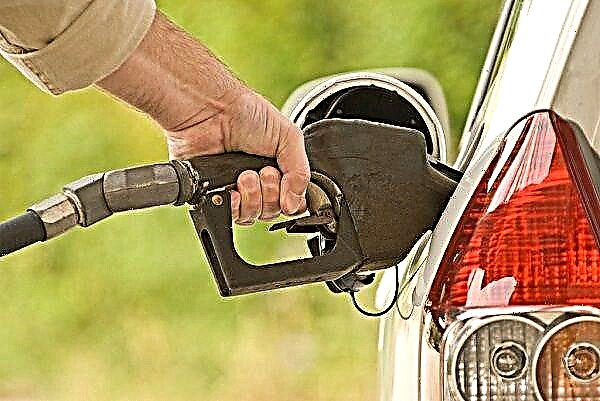
In order not to think about how to remove water from the gas tank of a car, it is better to take preventive measures and prevent the very fact of the appearance of water:
- fill fuel only at reliable, proven gas stations;
- try to keep the gas tank as full as possible;
- do not forget to pour alcohol into the tank on the eve of frost;
- use a lid with a lock to avoid hooligan tricks with the fuel tank.










